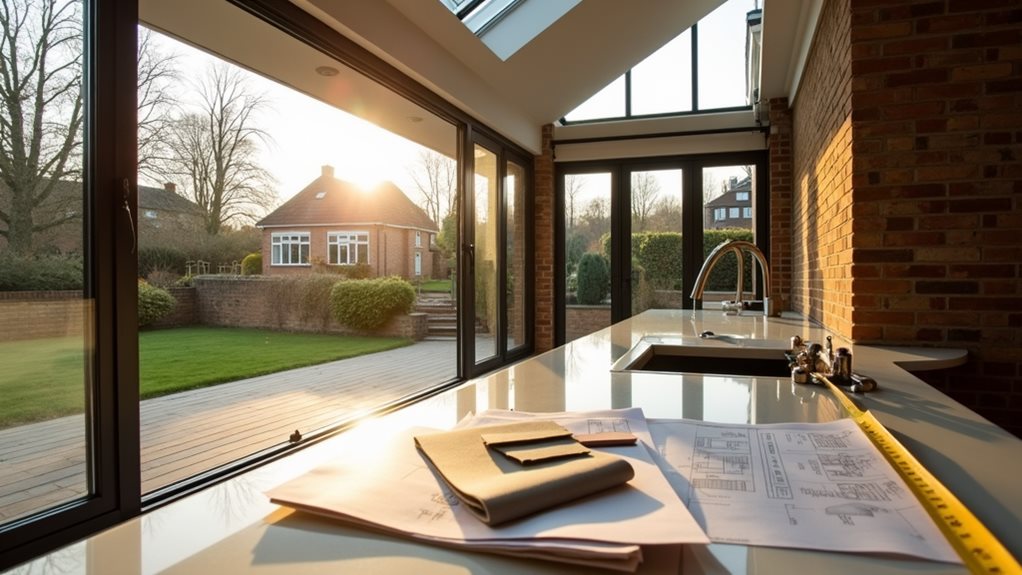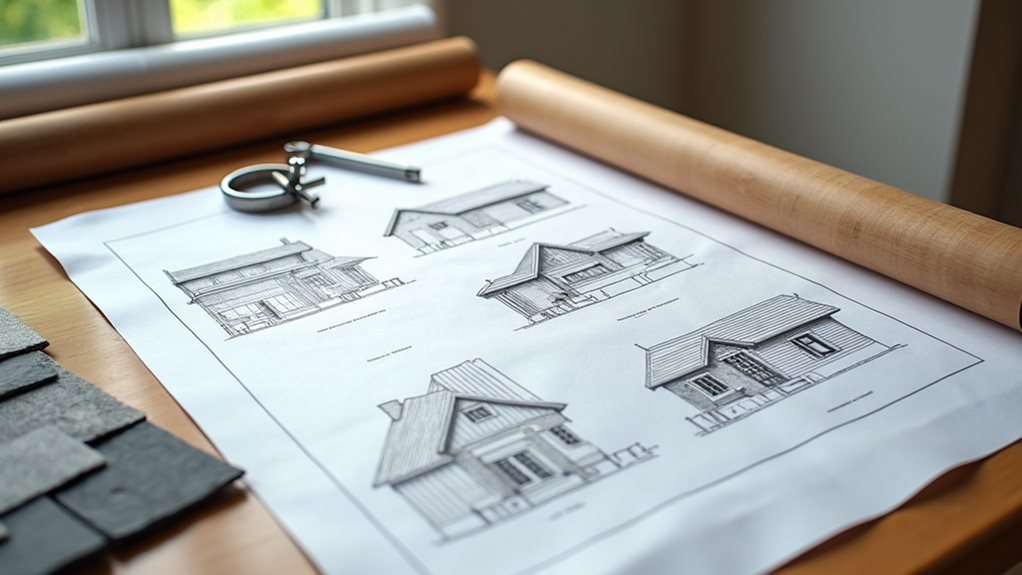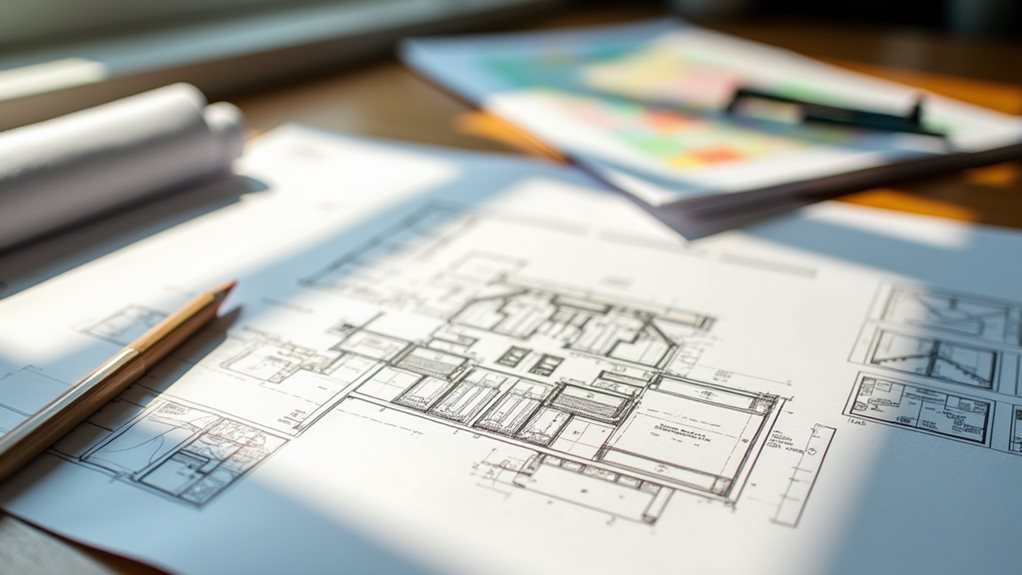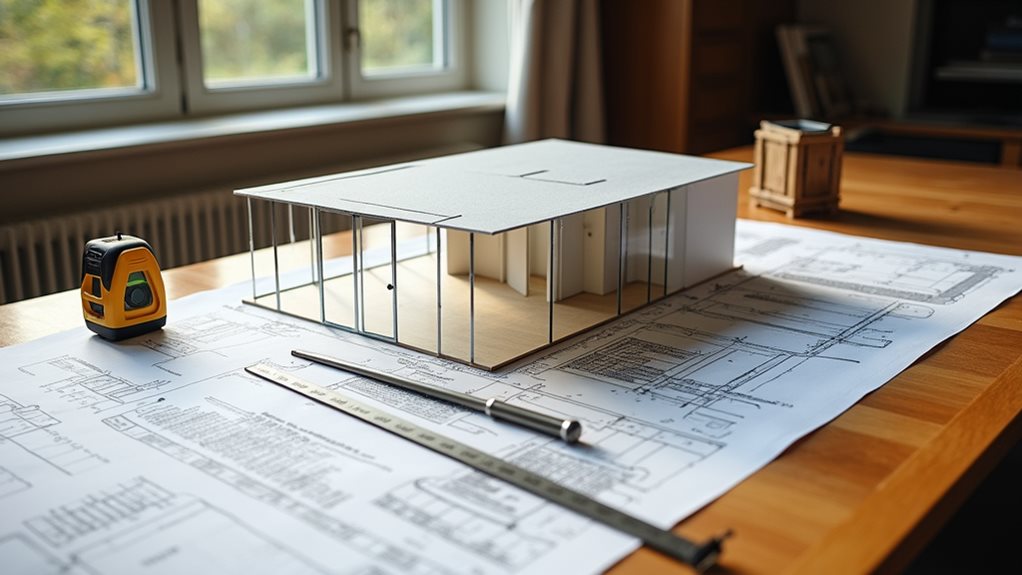Phone:
(701)814-6992
Physical address:
6296 Donnelly Plaza
Ratkeville, Bahamas.

Discover the essential factors for selecting wrap-around extension plans that maximize your home's potential while avoiding costly mistakes.
When choosing wrap around extension plans, you'll need to balance your property's potential with practical considerations. Start by evaluating your space requirements, local planning regulations, and budget constraints. Focus on designs that maximize natural light through strategic window placement and create seamless connections between old and new spaces. Consider L-shaped or single-storey options that complement your existing structure while enhancing functionality. The right plan will transform your home's layout while boosting its value, and there's much more to explore.

Home transformation takes an innovative turn with wrap around extensions, a versatile solution that combines rear and side-return additions to maximize your living space.
You'll discover that wraparound extension types include L-shaped and single-storey designs, each offering unique ways to enhance your property's footprint and functionality. With the help of local builders, you can ensure that your extension aligns with the overall design of your home, creating a cohesive look.
The wraparound extension benefits you'll enjoy are substantial.
You're not just gaining extra square footage; you're creating opportunities for open-plan living spaces, home offices, or playrooms that seamlessly connect with your outdoor areas.
The typical construction timeline of 4-6 months allows for careful attention to detail during the build process. Additionally, most homeowners can stay during construction, minimizing disruption to your daily life.
Through thoughtful design incorporating skylights and floor-to-ceiling windows, you'll flood your new space with natural light while adding significant value to your home.
Whether you're living in a semi-detached house, bungalow, or terraced property, this extension style can be tailored to suit your specific needs. Expert guidance is also available to help you navigate the complexities of planning permission and ensure a smooth project execution.
Before starting your wrap around extension journey, you'll want to conduct a thorough evaluation of your property's potential. Understanding your home's current market value and investment potential will help you make informed decisions about your extension plans.
When evaluating your property, consider these essential factors:
Your property's potential isn't just about its current worth—it's about understanding how a wrap around extension could enhance your home's functionality while maximizing its value in the property market. Properties with easy transport access tend to maintain stronger market appeal and often see better returns on improvement investments.
This evaluation will serve as your foundation for smart extension planning.

When you're planning your wrap around extension, you'll need to carefully consider how your new spaces will connect and flow together, ensuring smooth connections between old and new areas.
Natural light should be at the forefront of your design choices, with strategic placement of windows, skylights, and glazed doors to create bright, welcoming spaces that enhance your daily living experience.
Your extension also presents an excellent opportunity to blur the boundaries between inside and out, so consider incorporating seamless links to your garden through floor-to-ceiling glass panels or bi-fold doors.
Successful wrap-around extensions depend heavily on thoughtful layout planning and intelligent flow patterns that maximize both functionality and comfort.
When planning your space arrangement, you'll want to focus on creating seamless shifts between existing and new areas while enhancing natural light and garden views.
To achieve ideal flow enhancement in your wrap-around extension, consider these key elements:
Natural light integration stands as one of the most critical elements in designing a successful wrap-around extension, as it dramatically influences both the aesthetic appeal and functionality of your new space.
To maximize the natural light benefits, you'll want to contemplate strategic positioning of floor-to-ceiling windows and bi-fold doors, particularly on south-facing walls where sunlight exposure is most favorable.
Your design aesthetics can be enhanced by incorporating light, neutral colors and reflective surfaces that bounce daylight throughout the space.
Don't forget to include skylights or roof lights in areas where traditional windows aren't feasible.
You'll also benefit from maintaining an open-plan design with minimal structural obstructions, while using glass partitions to help distribute light effectively throughout your extension.
Building upon the principles of maximizing natural light, the concept of indoor-outdoor living spaces represents a cornerstone of modern wrap-around extension design.
You'll discover that creating seamless indoor connectivity while maintaining stunning outdoor aesthetics isn't just about aesthetics—it's about transforming your living experience.
To achieve this harmonious blend, consider these essential elements:

When you're planning a wrap around extension, you'll need to carefully navigate the planning permission process, which typically requires detailed architectural drawings and documentation for your local authority.
You'll find that most wrap around extensions don't qualify for Permitted Development rights due to their size and configuration, making a formal planning application necessary.
Working with an experienced architect or designer can help you understand the specific requirements of your local council and guarantee your application meets all necessary compliance rules, from materials selection to building regulations.
Since wrap-around extensions typically exceed permitted development limits, you'll need to navigate the planning application process carefully.
Your local planning authority will review your application based on specific criteria, including the impact on neighboring properties and the overall aesthetic of your area.
When preparing your planning application, consider these essential requirements:
Before undertaking a wrap-around extension project, you'll need to navigate a complex web of local authority compliance rules and legal requirements. Your local policies may have specific restrictions on wrap-around extensions, so it's essential to research these thoroughly before proceeding with your plans.
You'll find that compliance requirements vary greatly between different areas, particularly if you're in a conservation area or have a listed building.
Remember that you're required to submit detailed building regulations drawings and obtain proper approvals before starting any work.
Most importantly, you'll need to take into account your neighbors – serving appropriate notices under the Party Wall Act and addressing any concerns about light or privacy.
Working with experienced professionals can help guarantee you meet all local authority standards while maintaining positive community relationships.
As you commence planning your wrap-around extension, understanding the financial aspects becomes essential for project success. Effective cost estimation and expense tracking will help you maintain control over your budget while guaranteeing quality results.
Smart planning can help you avoid unexpected costs and make informed decisions about materials and design choices.
To manage your extension budget effectively, consider these key steps:
You'll find that balancing quality with cost-effectiveness requires careful consideration of materials, design complexity, and site conditions.

Moving beyond budget evaluations, the structural elements and building regulations of your wrap-around extension will shape the entire project's framework.
You'll need to ascertain your plans meet local authority requirements while maintaining structural integrity throughout the construction process. Remember, wraparound extensions are more complex than standard extensions, often requiring professional expertise to handle steel supports and wall removals safely.
Your project must comply with building regulations and safety standards, including regular inspections during construction.
If you're in a terraced or semi-detached home, you'll also need to take into account the Party Wall Act when building near shared walls.
It's worth consulting with experienced architects and structural engineers who can navigate these requirements while helping you create the perfect extension that seamlessly integrates with your existing home.
When designing your wrap-around extension, the strategic use of space and natural light will dramatically influence your home's functionality and aesthetic appeal.
You'll want to focus on space efficiency through open-plan layouts while maximizing natural light with carefully positioned windows and glazing solutions.
To achieve peak light optimization and spatial flow, consider these key elements:

Successful wrap-around extension projects depend heavily on meticulous timeline planning and effective construction management to secure smooth execution.
Your project duration will typically span several months, with construction taking 3-4 months for simpler designs and up to 6 months for more complex extensions.
To promote construction efficiency, you'll need to establish clear project roles and implement a robust monitoring system.
You're wise to plan for flexibility in your timeline, as factors like planning permissions and party wall agreements can extend your schedule.
Consider using construction management software to track progress and maintain regular communication with your team.
A wrap-around extension isn't just a home improvement—it's your gateway to creating that dream living space you've been yearning for. By carefully weighing your options, respecting regulations, and partnering with seasoned professionals, you'll be well on your way to transforming your humble abode into something extraordinary. Remember, while the journey might have its ups and downs, the end result will be worth every careful decision you've made along the way.